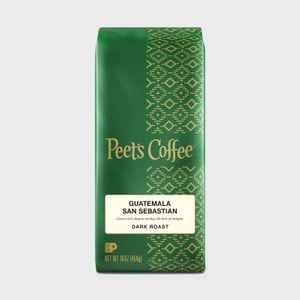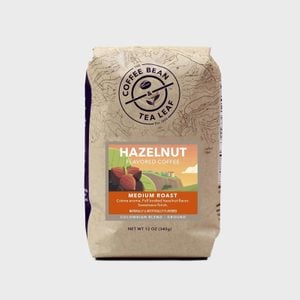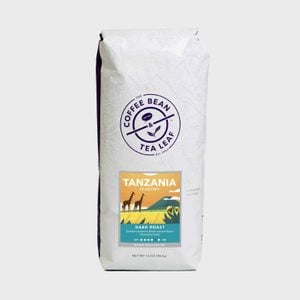Here’s What That Hole in Your Coffee Bag Is For
Updated: Jan. 27, 2023

Being able to smell the beans is just an added perk!
Did you know that according to a 2022 survey, three out of four Americans drink coffee every day?
Maybe you’re a Starbucks regular who isn’t going to win any coffee trivia. Or maybe you already know everything about pour overs and French presses—not to mention the best gifts for coffee lovers and coffee subscription boxes. Regardless of your level of coffee knowledge, you’ve probably wandered down a grocery store coffee aisle at least once, if only for that delicious coffee bean aroma.
If you’ve ever wondered “Why do coffee bags have holes in them?” while perusing the many different types of coffee you can buy, read on. We have the food facts behind this interesting bit of coffee science.
What are those holes in coffee bags?
When shopping for coffee beans, you might have noticed that some bags have a tiny slit or hole, built into a plastic valve. What are the holes doing there? Wouldn’t they make your coffee stale? Just the opposite! The holes in coffee bags actually act as a freshness device, to keep your beans in the best possible shape before you brew your morning cup of joe.
Why do coffee bags have holes?
No, the holes aren’t for smelling the coffee before buying—although that’s a bonus! The answer to “Why do coffee bags have holes?” is that the slits are part of a one-way valve that can release carbon dioxide, but not let in oxygen. Monica Russel, founder and CEO of Acquired Coffee, explains that after roasting, coffee beans slowly release CO2 for several days. This process is known as de-gassing, and it continues even after the beans have been packaged.
“If these gases were not able to escape, they would build up within the bag, causing the coffee beans to become stale and lose their flavor over time,” Russel says.
A buildup of carbon dioxide in a bag with no release valve poses another risk: explosion! If the coffee bag filled with too much gas, the bag would pop open, ruining the coffee—and making a mess. The valves are specially constructed so they allow carbon dioxide to leak out, but don’t allow oxygen or moisture, notorious coffee flavor killers, into the bag.
While exposure to oxygen or a carbon dioxide buildup doesn’t affect things like how much caffeine is in coffee, it does have serious flavor impact. Nobody wants stale beans, especially if you like drinking coffee black, and that’s the most important reason coffee bags have holes.
Should all coffee bags have a valve?
Not necessarily, because not all coffee bags come with or need valves; it depends on the roasting and packaging methods used. “Some specialty coffee roasters choose to forgo the use of valves, as they prefer to have their beans de-gas naturally before packaging, which can lead to a more nuanced and complex flavor profile,” Russel explains. Because de-gassing is why coffee bags have holes, in these cases, with no CO2 being released after packaging, a valve isn’t necessary.
However, for most mass-produced coffee, using a hole or valve is the industry standard. You won’t just find them in coffee bags, either–the same kind of valves are used for dried fruits, roasted nuts and tea to avoid bloated food packaging that causes the food to go stale, Russel says. (Speaking of, do you know what those colored circles on food packages mean?)
How do you open a coffee bag with a valve?
The valve shouldn’t affect the way you open the coffee bag. Just open as usual, by either tearing the top open or cutting it with scissors. After you open the coffee, be sure to store it somewhere airtight to preserve the flavor and freshness! Many coffee bags come with a resealable ziplock top for this purpose, or with a reusable tape strip to seal the bag. Happy brewing!
Sources:
- Monica Russel, founder and CEO of Acquired Coffee
- Drive Research: “2022 Coffee Statistics: Consumption, Purchases, and Preferences”























